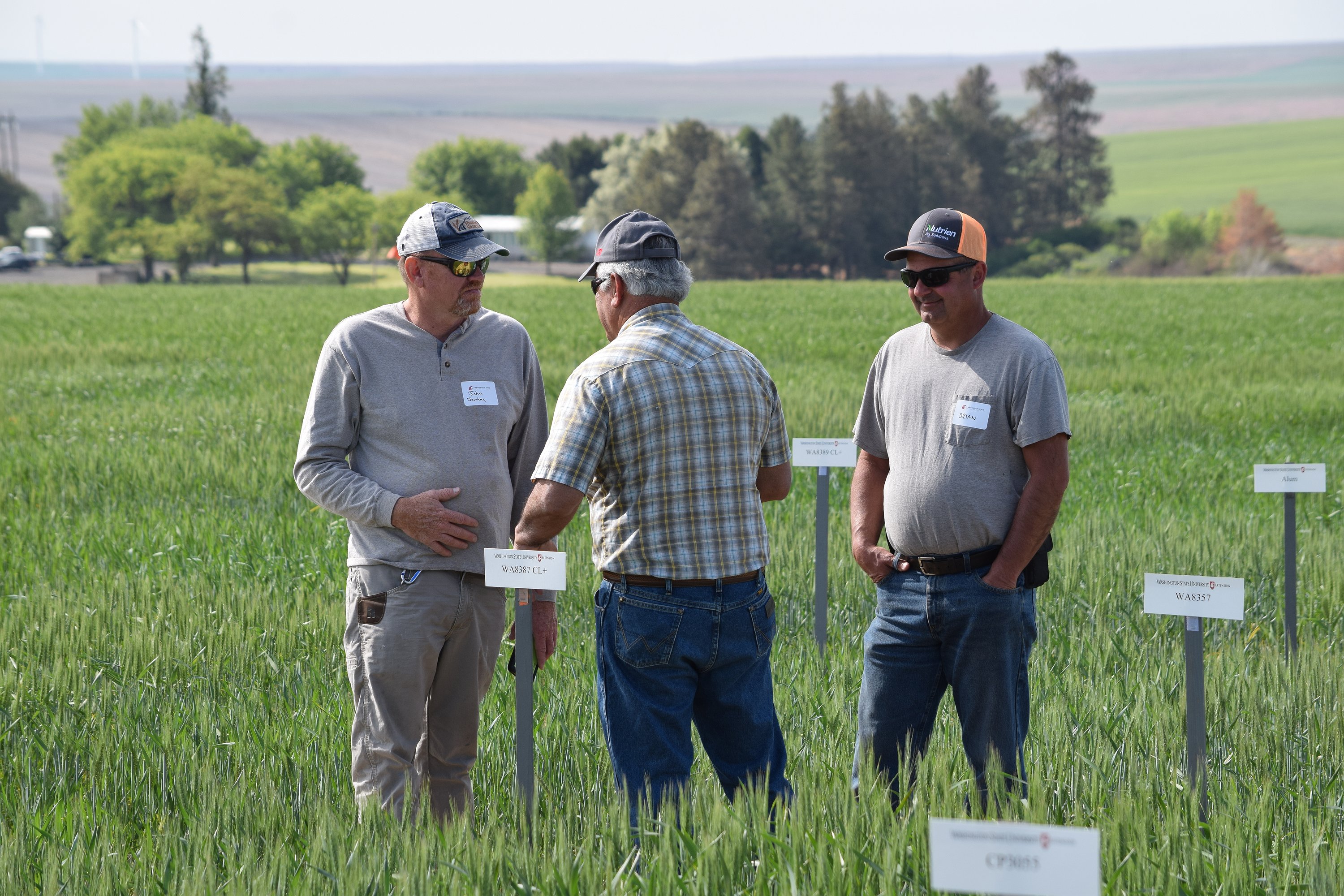Lind Dryland Research Station keeps Washington on the cutting edge of wheat
LIND — Some of the driest of dry land in the Northwest is to be found in the middle of Adams County, Washington, where a team of scientists is working hard to improve the region’s biggest crop, wheat.
“We have a lot of projects ongoing right now,” said Surendra Singh, director of the Washington State University’s Lind Dryland Research Station. “We have an organic wheat trial in Adams, Oregon … and then we recently got funding to do research on (Conservation Reserve Program) land. We are doing research on, when land goes into the CRP and out of CRP, what changes happen to the crop and plants and soil, what changes growers should expect, and how soil recovers, how long those benefits last, and how the function of microbial microbial function within soil changes and how it will affect the crop yield and grain quality.”
The Lind Dryland Research Station was established in 1915, according to WSU’s website, to promote better farming practices in an area that gets 8-12 inches of rain a year. The Lind Station receives an average of 9.6 inches annually, which makes it the driest of any state or federal dryland ag research facility in the U.S. The station has trials going at Davenport, Ritzville, Walla Walla and Washtucna, and also down into the Pendleton, Oregon area. Even in the relatively small expanse of eastern Washington, Singh said, there’s a lot of variance.
“We are in an area where there are lots of microclimates,” Singh said. “Even if you go 50 miles, things start to change in terms of rainfall, and from here to Ritzville (about 12 miles) we have a couple of inches’ difference.”
The Lind Station has ongoing trials in weed control, particularly Russian thistle, and a study of more than 400 lines of camelina, a relative of canola that’s shown promise in rotating with wheat, according to the WSU website. Singh’s predecessor, Bill Schillinger, began a study in the legacy of biosolids in 2011 that is ongoing as well.
“The last application of biosolids was done in 2016 and until last year, when we took the yield data and soil data, those effects are still present in the soil,” Singh said. “It’s not only when you apply; everything we do, especially in dryland, has long-term impact, whether the tillage or the biosolids, manure, or anything we do, it has a legacy effect. The last application was in 2016 and … we are still seeing those effects in the soil, in the weeds, in the yield biomass of the crop and everything.”
Much of this work will go on display for the public in June, when the Lind Dryland Research Station holds its annual Field Day. Attendees will spend the day learning about the work done at the station and its effects, with presentations from WSU experts.
“We have different spots in the field where each researcher has their trial, and we take everybody on different vehicles and bleachers and they showcase (their project), and then they move to the next spot. Then we have WSU department chairs and the Washington Association of Wheat Growers, the grain commission, and Senator Schoesler give their updates about their work.”
The Field Day also includes lunch and an ice cream social, something the staff particularly looks forward to.
“In the morning we have humungous donuts,” said Shikha Singh, a research assistant professor and soil scientist at the station. “And then we have lunch, barbecued chicken and pork.”
“We get ice cream sandwiches from the WSU Creamery,” Surendra Singh interjected.
“Yeah,” Shakti Singh said. “They have the best huckleberry ice cream.”




